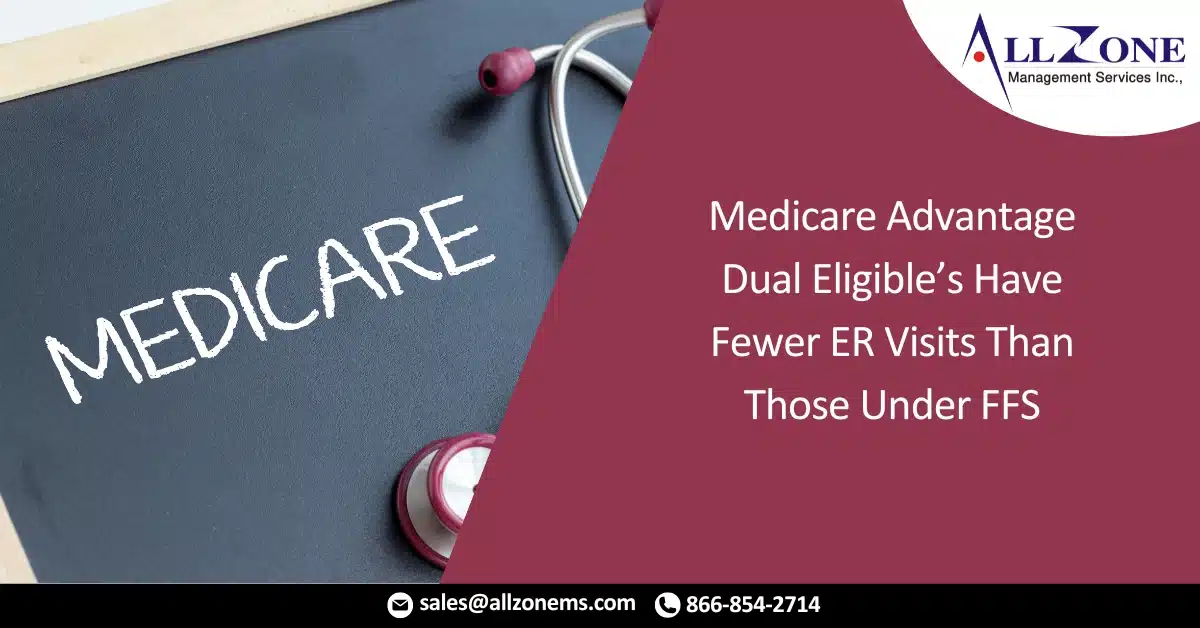Dual eligible Medicare Advantage beneficiaries had 42.1% less emergency room visits than their fee-for-service counterparts.
The cost of care and rate of hospitalizations for dual eligible Medicare Advantage (MA) beneficiaries was considerably lower than dual eligibles under fee-for-service (FFS), according to an Avalere Health study released Tuesday evening.
Dual eligible Medicare Advantage (MA) populations averaged healthcare costs of $11,159 compared to $13,398 for dual eligible FFS populations. Even among non-dual eligible populations, MA members only exceeded FFS non-dual eligibles by $820.
Avalere attributed the cost differential to higher spending on inpatient and outpatient services under FFS, while physician services and tests were higher under Medicare Advantage (MA).
On three separate metrics, MA populations also outperformed FFS when it came to utilization, but also outperformed on quality and preventative care measures for chronic conditions as well.
MA beneficiaries had 11.7% more office visits, a 32.9% lower rate of hospitalizations, and 42.1% less emergency room visits, though they maintained similar lengths of stay.
Christie Teigland, PhD, a coauthor of the Avalere report, told HealthLeaders that despite the growing popularity of MA plans, there has been little research into the cost and quality aspects of these coverage options.
“The significant finding here is that Medicare Advantage (MA) plans get a fixed amount bid based on the acuity of their members and they have great flexibility to better coordinate care, provide preventive services, and hopefully results in better outcomes and lower costs,” Teigland said. “There hasn’t been a lot of data showing that that’s the case. Some of the current [thinking] is mixed saying ‘Oh, FFS does better here or there,’ but this study was pretty convincing.”
Dual eligible MA beneficiaries with diabetes experienced 49% fewer overall complications and 71% fewer serious complications compared to their FFS counterparts, according to the study.
While rates of HbA1c testing were similar between the two populations, dual eligible Medicare Advantage (MA) members had a 17.4% higher rate of low-density lipo protein cholesterol testing and a 23% higher rate of breast cancer screenings than FFS populations.
The same trend held for hospitalizations, as MA beneficiaries had a 24% lower rate of “potentially avoidable hospitalizations” and half as many “potentially avoidable acute hospitalizations” when compared to FFS.
The MA population was also notable as it included a greater ethnic and racial diversity than the FFS population analyzed in the Avalere study, allowing for a broader analysis of disease burden, need, and spending rate.
Teigland said that recent changes to Medicare Advantage (MA), specifically its offerings around the social determinants of health (SDOH), have allowed payers and providers to take a more comprehensive approach to positively affecting patient health outcomes.
“MA plans are looking at SDOH as a part of the whole medical care of a patient,” Teigland said. “They’re providing transportation, they’re buying food, they’re paying electric bills, they’re doing all kinds of things to address the non-medical aspects of care and showing some very significant costs. The message to the providers and to the payers is that there’s better way to do this.”
For More Information: https://www.healthleadersmedia.com/finance/medicare-advantage-dual-eligibles-have-fewer-er-visits-those-under-ffs

